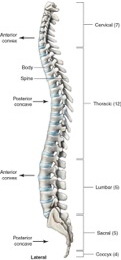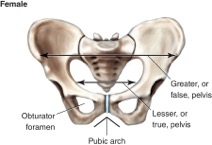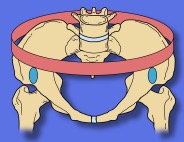Article by the Drummond Team
‘Brace the Core’ or ‘Engage the Core’ has almost become a mantra chant in the fitness industry. As an exercise therapist, I often wonder if it means anything at all to a client or class member and if they actually know how to control movement through micro control within the trunk. I think as instructors we must first be familiar with the anatomy, physiology and kinesiology of the core so that we can properly teach clients or class members how to engage the body correctly. i.e. engage the intrinsic (deep stabilising) muscles to protect the spine whilst activating the superficial (global) muscles during functional and everyday movements.
Definition
The core refers to two elements of the trunk and attached levers musculature. It refers to the muscle groups which sit deep and closest to the spine as intrinsic stabilisers and the global mobilisers which are the muscles we use for movement. Good core stability is the ability to create deep pelvic and spinal activation in order to support the movement required during any chosen activity.
The intrinsic stabilising muscles are the deep muscles with their origin or insertion closest to the spine & pelvis
These muscles form a cylinder of support around the spine. By co-contraction in the correct recruitment sequence initiated by (either a feed forward or backward control mechanism) messaging from the global prime movers.
These muscles include:
Transversus Abdominus (anteriorly via abdominal aponeurosis)
Internal Obliques (antero-lateral)
Pelvic floor (inferior)
Multifidus (posterior)
Deep erector spinae muscles (posterior)
Quadratus Lumborum (postero-lateral)
Diaphragm (superior)
Iliopsoas (inferior/superior)
Directionally located these deep stabilisers work as a cylinder unit of stability to support the spine.
These deep stabilisers should:
- Turn on before you move to support the spine and pelvis
- Turn on and stay on as you move
- Work at a low intensity and stay on for long periods
- Work independently of the global movement
Modern living means that for a good many people this cylinder doesn’t activate when or how it is supposed to, leading to compensation and a global movement pattern dysfunction. As the cylinder can work independently of the global mobilisers, if ‘switched off’ the global mobilisers move the spine without it’s stabiliser on and put the spine at risk. This often leads to back pain and other issues. If the body didn’t compensate the spine would be unable to resist the forces of gravity or muscle pull and would collapse. Once back pain is evident, the local stabilisers may have an even more delayed activation response prior to movement .
In observing our clients move, it is important that we assess their movement patterns to understand whether the intrinsic stabilisers or global mobilisers are underactive or overactive in the movement. We need to activate this deep intrinsic system to improve its recruitment and function and reduce the global muscle compensatory movement. This will improve posture, stabilise the spine, reduce back pain and generally make your clients feel and move better.
As the functions of the intrinsic stabilisers are different to the global mobilisers of the spine, it isn’t as simple as saying ‘engage the core’ or any derivative of it. I believe that as instructors we have the ability to observe and analyse the effective recruitment of muscles in a sequence and timing that is correct. We can then introduce movement that is stability focussed and emphasises the stabilising characteristics of the cylinder and to introduce movement strategies such as micro control to effectively increase true engagement and reduce the compensatory movement about the spine.
I am confident I am preaching to the converted and that the benefits of this approach will be obvious to all.
How do we recognise stability through the core local stabilisers? Think about the list of muscles above. You must activate the pelvic floor, engage through TVA and abs, elevate through the breast bone without flaring the ribs to free up the diaphragm and to make the diaphragm, pelvic floor connection through iliopsoas. Did that bear any relation to ‘engage the core’.
When you then apply an exercise movement to your client, watch for any disengagement through this process and any compensatory movement that happens in the very 1st second of a movement.
i.e As an example, lie on the floor in neutral spine, with legs in an A frame, engage the local stabilisers as above, and the hands by the side on little fingers only.
Lift one knee into table top, was there any compensatory movement in the 1st second, i.e. abdominal doming, popping through the spine, pressure through the hands, movement through thoracic.
If micro control isn’t evident then this needs to be developed prior to any larger global movements. If you can’t hold it then you can’t move it.
If you are interested in learning more about this area of exercise why not join our therapy exercise course






